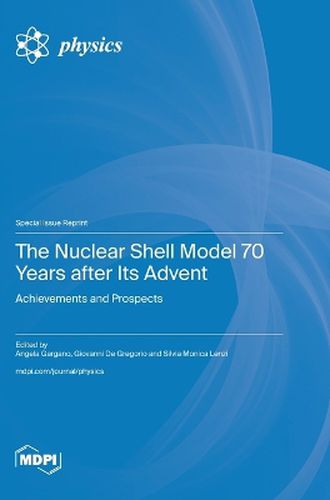Readings Newsletter
Become a Readings Member to make your shopping experience even easier.
Sign in or sign up for free!
You’re not far away from qualifying for FREE standard shipping within Australia
You’ve qualified for FREE standard shipping within Australia
The cart is loading…






This title is printed to order. This book may have been self-published. If so, we cannot guarantee the quality of the content. In the main most books will have gone through the editing process however some may not. We therefore suggest that you be aware of this before ordering this book. If in doubt check either the author or publisher’s details as we are unable to accept any returns unless they are faulty. Please contact us if you have any questions.
This reprint explores the fascinating world of nuclear physics, focusing on the shell model, which is one the most important concepts for understanding atomic nuclei structure. Within this model, the complexity of the nuclear many-body system is drastically reduced by considering a limited number of nucleons moving in a reduced model space and interacting via effective forces that account for the missing degrees of freedom. Since its birth about 70 years ago, this model has been successfully applied to investigating the rich structure of atomic nuclei, with important implications in astrophysics and physics beyond the standard model. In recent years, experimental tools allow the exploration of regions of the nuclide chart towards the drip lines; this has led to the discovery of new and unexpected phenomena, whose interpretation has required large computation efforts and the development of more efficient codes and has also probed the reliability and robustness of the shell model in describing the behavior of nuclei far from the valley of stability. Substantial progress has also been achieved in deriving effective shell-model interactions from the force between free protons and neutrons, as well as in developing advanced techniques to include the effects of the continuum. This reprint provides an overview of the shell model's status and future developments. It illustrates its versatility and power in understanding the structure of nuclei, including processes related to other branches of physics.
$9.00 standard shipping within Australia
FREE standard shipping within Australia for orders over $100.00
Express & International shipping calculated at checkout
This title is printed to order. This book may have been self-published. If so, we cannot guarantee the quality of the content. In the main most books will have gone through the editing process however some may not. We therefore suggest that you be aware of this before ordering this book. If in doubt check either the author or publisher’s details as we are unable to accept any returns unless they are faulty. Please contact us if you have any questions.
This reprint explores the fascinating world of nuclear physics, focusing on the shell model, which is one the most important concepts for understanding atomic nuclei structure. Within this model, the complexity of the nuclear many-body system is drastically reduced by considering a limited number of nucleons moving in a reduced model space and interacting via effective forces that account for the missing degrees of freedom. Since its birth about 70 years ago, this model has been successfully applied to investigating the rich structure of atomic nuclei, with important implications in astrophysics and physics beyond the standard model. In recent years, experimental tools allow the exploration of regions of the nuclide chart towards the drip lines; this has led to the discovery of new and unexpected phenomena, whose interpretation has required large computation efforts and the development of more efficient codes and has also probed the reliability and robustness of the shell model in describing the behavior of nuclei far from the valley of stability. Substantial progress has also been achieved in deriving effective shell-model interactions from the force between free protons and neutrons, as well as in developing advanced techniques to include the effects of the continuum. This reprint provides an overview of the shell model's status and future developments. It illustrates its versatility and power in understanding the structure of nuclei, including processes related to other branches of physics.